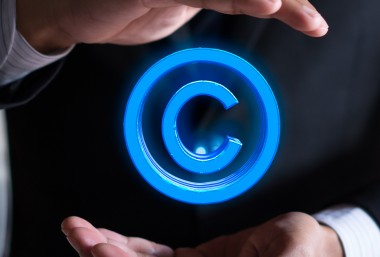The Copyright Tribunal's first decision, under New Zealand's controversial 'three-strikes' file-sharing legislation, was issued on 29 January 2013.
The Copyright Tribunal's first decision, under New Zealand's controversial 'three-strikes' file-sharing legislation, was issued on 29 January 2013. The Recording Industry of New Zealand (RIANZ) has hailed the decision as a win for the beleaguered music industry. On the other side, groups like Tech Liberty say the system is flawed and that account holders who do not even know what has happened are paying the price.
The ruling
In R1ANZ v Enforcement Number: Telecom NZ 2592 [2013] NZCOP 1,1 the Copyright Tribunal upheld complaint of unlawful file-sharing. It made orders that the account holder pay the following sums to RIANZ:
|
Breakdown of damages |
NZ$ |
US$ equivalent |
|
Penalty fee for downloading 3 tracks |
6.57 |
5.70 |
|
Contribution towards ISP fees |
50.00 |
42.00 |
|
Cost of application fee |
200.00 |
170.00 |
|
Deterrent sum |
360.00 |
307.00 |
|
Total |
616.57 |
524.70 |
How the system works
In short, the system works like this. When a person infringes copyright, the copyright owner or its agent (the rightsholder) issues an infringement notice. The infringement notice is sent to the account holder's internet service provider (ISP). The ISP then forwards the notice to the account holder. There are three levels of notice. They are detection, warning, and enforcement notices and they must be issued in that order. The account holder can challenge the notices.2
For the Copyright Tribunal to award damages there must be three infringements on the account over a period of approximately three months. After the rightsholder issues an enforcement notice, it can apply to the Copyright Tribunal requesting that it awards damages to the rightsholder. Either party can request a hearing. If neither party requests a hearing the Copyright Tribunal will make a decision based on
the papers filed.
If there are infringements, the Copyright Tribunal must award a sum to the rightsholder unless it would be manifestly unjust to the account holder to make that award. The Copyright Tribunal cannot issue injunctions. But relying on these provisions does not preclude a copyright owner from also suing under the normal provisions of the Copyright Act. The maximum award the Copyright Tribunal can make is NZ$15,000 (US$12,700).
The decision in RIANZ v Enforcement Number:Telecom NZ 2592
In its first decision, the Copyright Tribunal has provided detailed reasoning for the conclusion it has reached. The decision is interesting for several reasons. The account holder admitted downloading one of the tracks using uTorrent but did not admit to the other two claims of infringement. In a letter to the tribunal, she stated that she did not know how the second and third infringements occurred. In particular, she said that it was not downloaded by her or any otthe people that she lives with. She also indicated that when she downloaded the first song, the uTorrent software was installed on her computer and that she had to get someone to uninstall the program after she received one of the warning notices.
This decision highlights what some people,consider are flaws in the system. First, it is the account holder, not the person who downloads the songs that receives the infringement notices and must pay any damages. If you are the account holder in a flat and one of your flatmates unlawfully downloads a song then you will be liable for that infringement. This does not seem to fit with the laws of natural justice as the account holder is penalised for the actions of a third party.
Secondly, assuming that the account holder was telling the truth, it seems that the account holder did not understand how file-sharing using BitTorrent works. The account holder did not know that whenever she turned her computer on, the uTorrent program would run. This put her at risk of uploading music tracks that others could copy without her being aware that this was happening.
Thirdly, the legislation creates a presumption of infringement.3 Every alleged infringement identified in a notice is deemed to have happened unless the account holder can prove that it did not.4 This requires the account holder to prove a negative - that is, prove that the infringement did not occur. If the account holder and all the people who use the account deny copying, that may be enough to overcome that presumption. In this case, the Copyright Tribunal held that the presumption was not overcome.
Assessing the penalties
The Copyright Tribunal must make an order that the account holderpays damages to the rightsholder unless it would be manifestly unjust to do that.5 The damages fall into four categories:
- damages for infringement
- contribution to ISP fees
- cost of the official fee
- a deterrent sum.
When calculating the deterrent sum, the Copyright Tribunal can take into account the flagrancy of the infringement, the effect of the unlawful activity on the market for the work and whether the damages awarded will deter future infringing.
When asking for damages for infringement, RIANZ argued that the Copyright Tribunal should take into account the fact that uploading the song would make it available for copying by a large number of people over a Peer-2-Peer (P2P) network. The Copyright Tribunal rejected that argument. It said that this was not a relevant consideration when determining damages. Instead, it calculated damages based on the cost of lawfully downloading the songs.
When calculating the deterrent sum, the Copyright Tribunal acknowledged that sharing over a P2P network could be taken into account. RIANZ asserted that there were around 700,000 people in New Zealand accessing unlicensed P2P services. The Copyright Tribunal accepted in principle that uploading works could have a detrimental effect on the market for the works. However, the tribunal indicated that
a rightsholder needs to provide concrete evidence of the number of times a file is copied over a P2P network and could not estimate that number.
The Copyright Tribunal also rejected the claim by RIANZ that the copying was flagrant. The Copyright Tribunal considered that three infringements over eight months combined with the account holder's willingness to engage in the process showed that the infringing was not flagrant.
Is the system working?
It has taken approximately 18 months for the first decision to issue since the law came into effect. Therefore, it is not clear that this process is being effective. Two more decisions have issued and those have included penalties similar to the first case. Critics of this system would say the small number of cases and infringing acts does not reflect the huge losses that the music industry claimed was being lost through P2P file-sharing.
However, while the penalties handed down are relatively small they may be effective. Having to pay damages of $600, or more, is probably enough for most people to make sure they are not infringing. And the recent publicity is a warning to people that they can be stung personally for any infringement on their account.
There are clearly issues. First, the account holder being liable for the infringing acts of any person who uses the account seems to contravene the laws of natural justice. If a copyright owner sues for infringement (which it can still do) it will have to sue the person who is infringing. The response from rightsholders is that without this system, there is no way for them to identify what ISP accounts people are using to copy songs. In effect, without this system, they are powerless to stop the infringing.
Secondly, the presumption of infringement again seems to be a breach of the laws of natural justice. However, without the presumption, rightsholders are virtually powerless to stop infringing activity. It will also be interesting to see how the tribunal reacts if all the people who have access to an account swear affidavits that they have not committed any infringements.
Footnotes
1. http://www.nzlii.org/nz/cases/NZCopyT/2013/1.html
2. Copyright Act 1994, sections 122A-122U
3. Section 122N(1)(a)
4. Section 122N(2)
5. Sections 1220(2) and (5)
This article appeared in the April 2013 edition of Intellectual Property Magazine.

